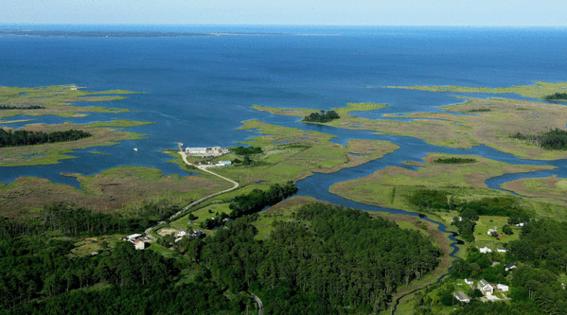The Chesapeake Bay's 'dead zone' stays at long-term average. It's a 'good sign'
Published in Science & Technology News
The dead zone in the Chesapeake Bay, where there’s low oxygen for underwater life, was near its average size in 2024, according to new data from the Chesapeake Bay Program.
The dead zone is the area in which there is a relatively low amount of oxygen, a condition known as hypoxia. Typically, this means that polluted runoff has brought in phosphorus and nitrogen, which feeds the growth of algal blooms. These blooms eventually die and decompose, removing oxygen from the surrounding waters faster than it can be replenished. Animals such as crabs, oysters and fish need healthy levels of oxygen in the water to survive.
Earlier this year, forecasts of the dead zone predicted it would remain near the long-term average taken from 1985 to 2023. Last year, the dead zone in the Chesapeake Bay was the smallest it has been since recording began in the 80s.
“The past few years of near or below average bay-wide hypoxia levels are a good sign that Chesapeake Bay nutrient management actions are working, but these must be continued if we are to outpace water quality degradation due to climate change,” said Marjy Friedrichs, research professor at the Virginia Institute of Marine Science.
The zones happen every year and are often weather-dependent, with primary drivers being nutrient inputs, wind and temperature. Heavy rainfall can wash more pollution into the bay as runoff. Higher summer air and water temperatures, driven by climate change, and light winds can also induce the right conditions for excessive algae growth.
In addition to the Chesapeake Bay Program, VIMS also released its own report card for the bay’s dead zone. According to the institute, hypoxia increased in May and was higher than average in the first half of June, following a period of calm winds.
Faster winds in the second half of June “likely resulted in a decrease in hypoxia,” VIMS reports, from the early-June peak. Hypoxia decreased substantially after Hurricane Debby, until cooler temperatures helped end it for the year in early October. This means the duration of hypoxia in 2024, or about 96 days, was shorter than average.
Despite progress, environmental groups still warn that the bay will not meet 2025 goals for restoration. The region’s governors, and other state, local and federal leaders will meet in December for the Chesapeake Executive Council meeting to discuss progress, and Alison Prost, vice president for environmental protection and restoration of the Chesapeake Bay Foundation, said more needs to be done in order to complete restoration. This means accountability and more cross-state partnerships across the watershed, she said in a statement.
“The only way to shrink the Chesapeake Bay’s dead zone is by working across state lines,” Prost said. “Too much pollution from six states and Washington, D.C., still flows into the bay and fuels this degrading phenomenon that chokes underwater life. Thankfully, bay restoration science continues to evolve, highlighting ways we can be more efficient and targeted in our pollution reduction efforts. For decades, the bay restoration partnership has brought federal, state, and local efforts together around common goals for a healthier Chesapeake Bay. As the 2025 deadline approaches, we’re at a crossroads.”
_____
©2024 The Virginian-Pilot. Visit pilotonline.com. Distributed by Tribune Content Agency, LLC.







Comments